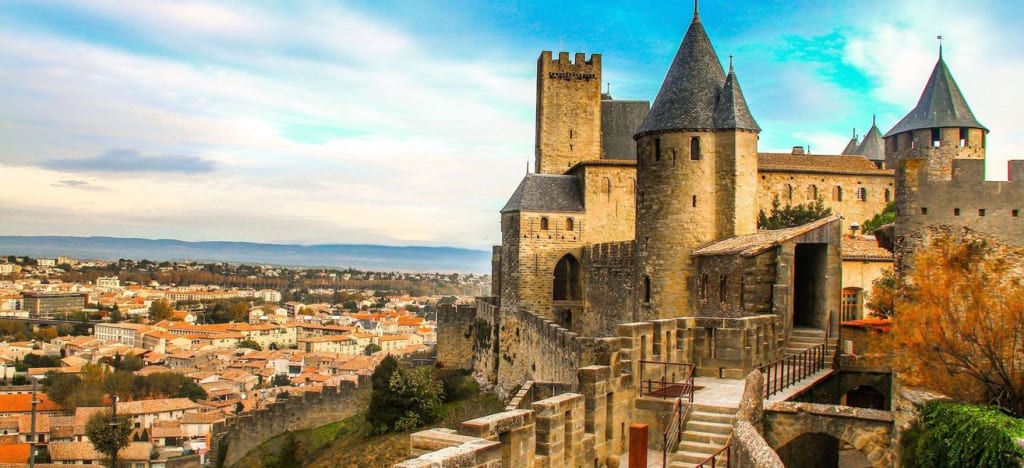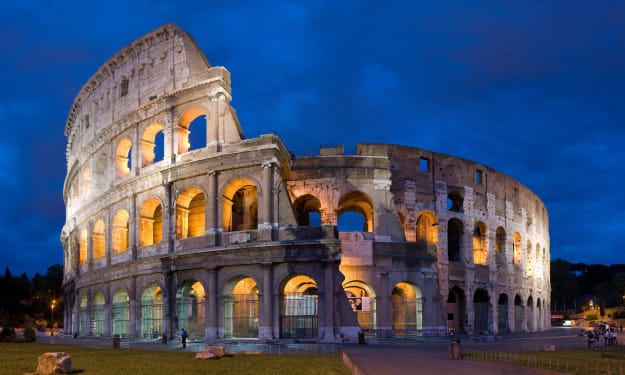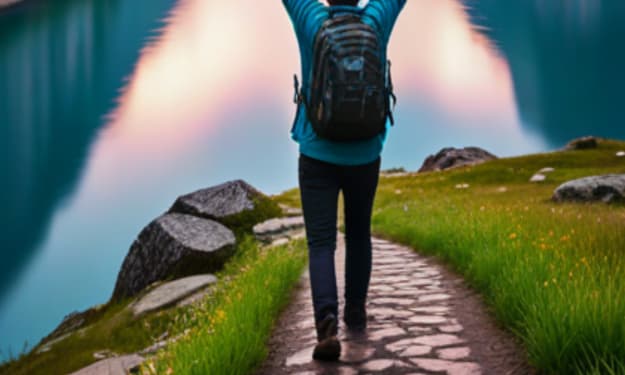Carcassonne in January
The Beauty of the South of France in Low Season

When we think of the South of France, the things that often come to mind are sundresses in the sunshine, maybe a glaceby the river, at the very least the glamour of the Cannes Film Festival. However, this is not the case if, like me, you decide to visit in January.
Thanks to low-cost flights, we got round trip tickets to Toulouse for £20 per person (that's about $25 for those of you in the USA), and additional return train tickets to Carcassonne for €28 per head. Can't blame us for taking the opportunity to visit a World Heritage Sight, really.
Carcassonne is a stunning medieval fortified town on the top of a hill. It is easily accessible by rail, car, and on foot or bike if you want to be brave and go up that hill. The Citè is the old part of the city, dating back to the fiftth century (that's the 400s... so a long time ago) with additions progressively until the 1800s when it was abandoned. It was added to the UNESCO database in 1997.
A few important historical dates for you. Skip ahead for the tourist info:
- There has been a settlement here since 3500 Before Christ. It was right next to the border with Spain (which has since been moved) and so of important strategical importance.
- The Romans fortified the city in 100 BC and built the first part of the ramparts.
- They very generously gave Carcassonne to the Visigoths, who had basically been looking after it anyway, in 462 AD. They built more battlements, as well as the beginnings of the cathedral. They were serious about the battlements, too - the French tried repeatedly to take Carcassonne, and failed.
- In 1067, Count Trancavel became head of Carcassonne. Through marriage to the last daughter of the last count of Carcassonne. He built the castle where the museum now resides, as well as the Cathedral.
- In 1209 the Crusades were in full swing in France. The French were sick of the pagan heathens of the south, and eventually imprisoned Trancavel Jr (who died mysteriously..) and got everyone to leave Carcassonne so it officially became part of France. They built yet more walls.
- I really did mean impregnable - the English prince Edward the Black Prince tried to conquer it in 1355. He failed.
- Remember what I said about moving the border with Spain? Yeah, 1659. So all of a sudden, Carcassonne has no strategic value, and is abandoned.
I had been to Carcassonne once before in the summer of 2014, and not much has changed, in a place that has been there for hundreds of years. However, these are the differences between visiting in high season vs low season.
1. The Crowds
When I was there in August, at one point the only way to move forward was to go through a shop. The crowds are immense in the summer, and it is a constant one-way shuffle-shuffle-shuffle from the main gate to the museum to the cathedral to the exit. It makes it very difficult to actually enjoy the experience, because you have to queue for views, you get passive-aggressively nudged up the stairs, and do some passive-aggressive shoving yourself.
In January, it is considerably colder. Gone are the days of shorts and t-shirts, and you'll feel it when walking up that hill. But the beauty of being able to take a photo under the vaulted entrance gate with nothing but a pigeon in sight is absolutely worth it. There will be nobody stopping you from taking that panoramic shot of the town below (or on a clear day all the way to the Pyrenees) or squeezing past you to get to the models. We genuinely had to wait a few minutes for another human to come around so we could get them to take a photo of us!
In low-season, you can amble up the streets, walk in circles if you so desire, stop every 200m to glance at a breathtaking view or a weird-looking garden (I swear we saw a kiwi plant!).
1 point to low season.

For those of you skeptical.. this was August.
2. The Shops
In August, you have the full array. There are hundreds of sweet shops to look at, dozens of perfume and soap shops and scores of souvenir shops. In summer, there is your pick of places to try Cassoulet (you really should), or crepes if you have a sweet tooth, or even just an ice tea.
The sweet shops are incredibly colourful, with friendly shop assistants ready to make you the perfect gift box to take home, or bag to nibble while you queue. The smell is intoxicating and it really is a medieval Charlie and the Chocolate Factory scenario.
For souvenirs, you'll have many options in the high season, from your usual post cards and trinkets, to the unexpected fairy statues (no, we don't know why), to the higher end jewellery.
Conversely, in January, Carcassonne is a ghost town. I think we hit all of three open shops - one tourist shop, one sweet shop, and one perfume shop by the Cathedral, and that one was annexed to a hotel. Nowhere offered food or refreshments inside the Citè, and we were hard-pressed to find trinkets for home. We weren't there for that purpose, but I recognise that for someone coming from afar and spending more than £25 on their return flights it might be important to get something to remember the trip by. And if you've come all the way here, you might want to try the localspeciality, but we couldn't get our hands on Cassoulet even if we tried.
1 point to high season.

3. The Museum
In August, we took one look at the queue, and balked.
In January, the lady at the ticket kiosk had a book to keep her busy in between visitors.
I don't know if there's anything to add to that, other than the fact that the museum itself is absolutely skippable, containing a few models and no information that can't be found online.
However, the €9 ticket (or free if you're under 26) also includes full access to the ramparts, which come with beautiful views for photo purposes as well as just for memory-making moments.
1 point to low season.

4. Travel
In high season, as well as by rail and plane, you actually have the option of getting to Carcassonne by boat, and parking on the Canal du Midi. We highly recommend this very picturesque option, honestly. You do still then have to trek up the hill to actually get to the Citè, but you'll have the added bonus of the views of Carcassonne looming in the distance which you don't get by any other means of transportation.
The trains from Toulouse are frequent (every 30 minutes) and affordable. It is about 90km from Toulouse, which is just over an hour journey on the slow train.
Carcassonne even has its own micro-airport, with its well-timed shuttle to take plane-loads of tourists up to the Citè. This option is not available in low season.
1 point to high season.

So to finish, we are at a tie between low and high season, with two points for each.
If you want to avoid the crowds, take your time, and aren't too fussed about missing out on the hustle and bustle, absolutely go before April.
If you want the vibrancy of high season and a more tourist-friendly experience, and aren't fussed about queuing in the heat, absolutely go after April (and before October).
Beauty: 10/10
Absolutely would recommend to everyone, both seasoned travelers and families. Bring comfortable shoes.
About the Creator
Giulia DL
Pastry chef but not only, I write a bunch of unrelated things from recipes to product reviews to day-in-the-life whenever the mood strikes.
instagram @cosedolcissime
Enjoyed the story? Support the Creator.
Subscribe for free to receive all their stories in your feed. You could also pledge your support or give them a one-off tip, letting them know you appreciate their work.






Comments
There are no comments for this story
Be the first to respond and start the conversation.